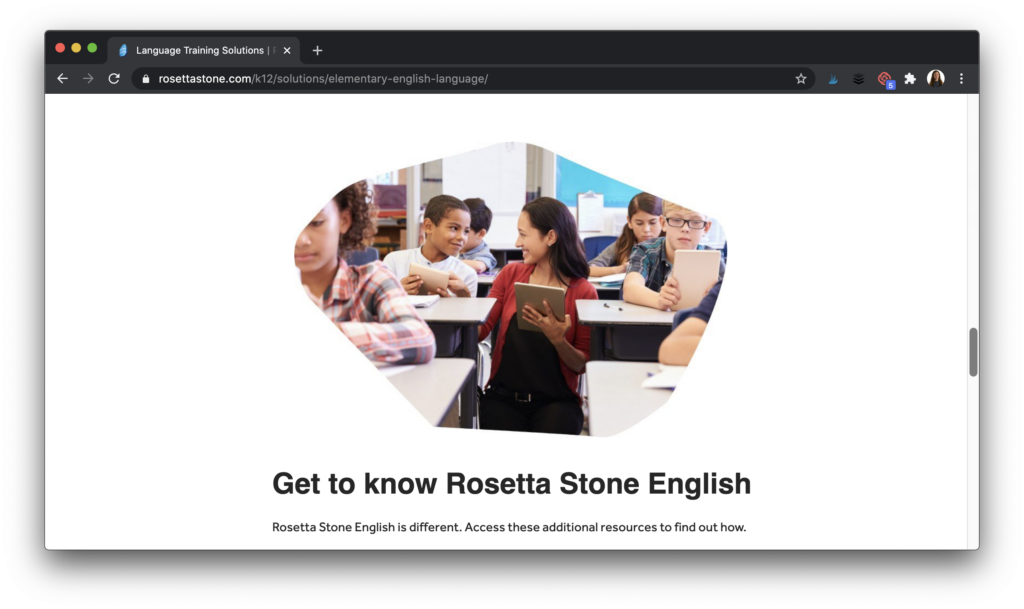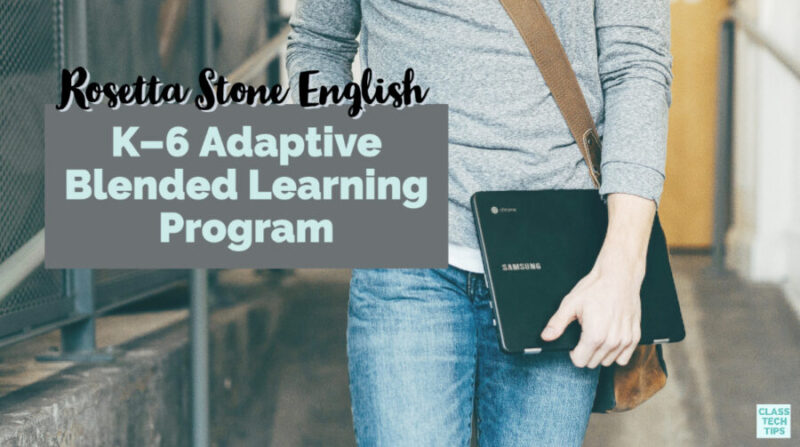This post is in partnership with Rosetta Stone. All opinions are my own.
Do you use adaptive software to support emergent bilingual learners in your district? You might be familiar with Rosetta Stone from its popular language learning software. I used Rosetta Stone to practice my Spanish before taking a language exam as part of my graduate work at Hunter College.
Their powerful software isn’t just for adult learners looking to brush up or learn a new language. Rosetta Stone English is a unique blended learning program for students in Kindergarten through sixth grade. In this blog post, I’ll share some of the key features of Rosetta Stone English and information on where you can learn more!
Check out Rosetta Stone English >>
Rosetta Stone English
Rosetta Stone English is a K-6 adaptive blended learning program that helps students develop their English language proficiency by engaging in conversations. It combines the academic language in math, science, and social studies to support students’ English language development. Rosetta Stone English also includes high-interest topics like biographies and general content knowledge.
In the video below, you can get a feel for everything Rosetta Stone English covers. It takes you through the adaptive blended learning program and some of the key features in the program that I talk about here in the blog post.
Rosetta Stone English aligns with many state and national language proficiency standards. The program focuses on three key areas — speaking, listening, and grammar. Students using Rosetta Stone English can practice speaking and listening skills in a culturally responsive digital environment. There are clear connections to the content they are learning in math, science, social studies, and general knowledge topics.
Adaptive Blended Learning Program

If you haven’t used an adaptive program with your students before, the critical concept is responsiveness. Using the information that it gathers as students move their way through the program, Rosetta Stone English adapts to each student’s needs.
The benefits of this type of program go beyond the instructional model. Students who participate in a blended learning model in a classroom can use Rosetta Stone English. Students learning at home in a distance learning or hybrid learning initiative can use Rosetta Stone English, too.
A blended learning program combines whole-group and small-group instruction with the personalized practice for individual students. In a face-to-face classroom setting, your students might rotate through stations and use Rosetta Stone English during this time.

In a hybrid model or distance learning initiative, students might log in at home to work through Rosetta Stone English activities. I love the flexibility of implementation that honors a variety of instructional settings and lets students dive into the program in multiple ways.
Teachers who check in on student progress in the classroom or while learning at home have access to a customized dashboard. The Rosetta Stone English Educator Platform offers real-time progress monitoring of student performance. Teachers can also keep track of student language proficiency and access actionable data that helps support individual students.
Ready to start using Rosetta Stone English at your school or district? Learn more by heading over to this landing page!
Coming Soon: Emergent Bilingual Week
Emergent Bilingual Week is October 19–23, 2020 and Rosetta Stone is hosting some special events! Visit this page to learn more about the special events and guest speakers: https://education.rosettastone.com/emergent-bilingual-week/ You certainly won’t want to miss this!







